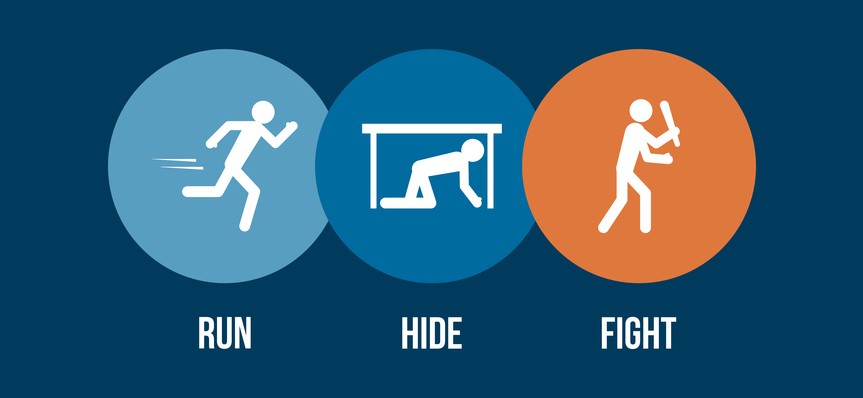Stopping an Active Shooter Is More Than Run, Hide, Fight
Unfortunately, our country continues to be plagued by horrific active shooter incidents such as what occurred at the Ft. Lauderdale Airport last week as we remember those who lost their lives or were injured in the attack. Because of the constant reoccurrence of these tragedies, the Department of Homeland Security created the action phrase ̶ ̶ Run, Hide, Fight. These instructions have become almost instinctive and such a key part of our culture that under extreme duress, such as an active shooter incident, ordinary citizens know how to react appropriately. And this knowledge of what to do will hopefully save their lives and possibly the lives of others.
Although I acknowledge the importance of Run, Hide, Fight, I also understand how much more needs to be considered in order to protect ourselves against an active shooter. Run, Hide, Fight instructs us primarily on what to do during an incident, but what also needs to be taught is how to prevent the incident from occurring in the first place. The year 2017 offers us an opportunity to pause, reassess, and look at two critical elements associated with active shooters—cause and mitigation.
Starting at the Beginning Is a Good Place to Start
After an active shooter incident occurs, the post-incident investigation traces the history of the shooter to determine possible association to the victims and the scene of the crime and often reveals a number of clues that show the active shooter was on a pathway to violence. Some of these warning signs include inappropriate posts or disturbing videos on social media, violent outbursts, threatening comments, and dramatic changes in appearance.
Because each of these incidents needs to stand on its own, we don’t have a universally accepted profile to identify a potential active shooter—so having the preventative strategies in place before an incident offers one key measure to mitigating it. If you know what indicators to look for and have access to professional assistance, such as mental health services, you may be able to determine if intervention is necessary. Any of these signs could be an indication of a much more serious problem that may require identification, assessment, and management of a potential violent situation by a team of professionals with a diverse skill set.
Failing to Plan Is Planning to Fail
So far, I’ve talked about what to do during an active shooter scenario (run, hide, fight) and the actions to take to prevent irregular behavior (identify, assess, manage) from deteriorating into an act of violence. A holistic strategy will feature all of these recommendations along with a number of other preventative disciplines in order to deter, delay, or deny the possible occurrence of an active shooter incident.
You can help to efficiently and effectively ensure safety and security with the proper planning, awareness, education and training necessary to respond to an active shooter. And the best way to implement these measures is to capture the essential processes in an Active Shooter Plan. The plan needs to be adaptable to circumstances, innovative, and, when necessary, improvisational and ideally prepares everyone for all hazards—natural, accidental, and intentional.
One Is the Loneliest Number
A site-specific Active Shooter Plan, such as for a commercial property or higher education campus, is not created by one person, or even a small group of people. In other words, your plan isn’t written in a vacuum. A multi-disciplinary approach is required and demands collaboration between internal and external stakeholders that are invested in the process. Individuals with diverse backgrounds, skill sets, and experience can come together and work side-by-side to design a plan to mitigate this threat. In-house staff can include security, legal, HR, facilities, maintenance, and emergency management while outside constituents are typically contract security, law enforcement, fire department, medical, and local emergency managers.

